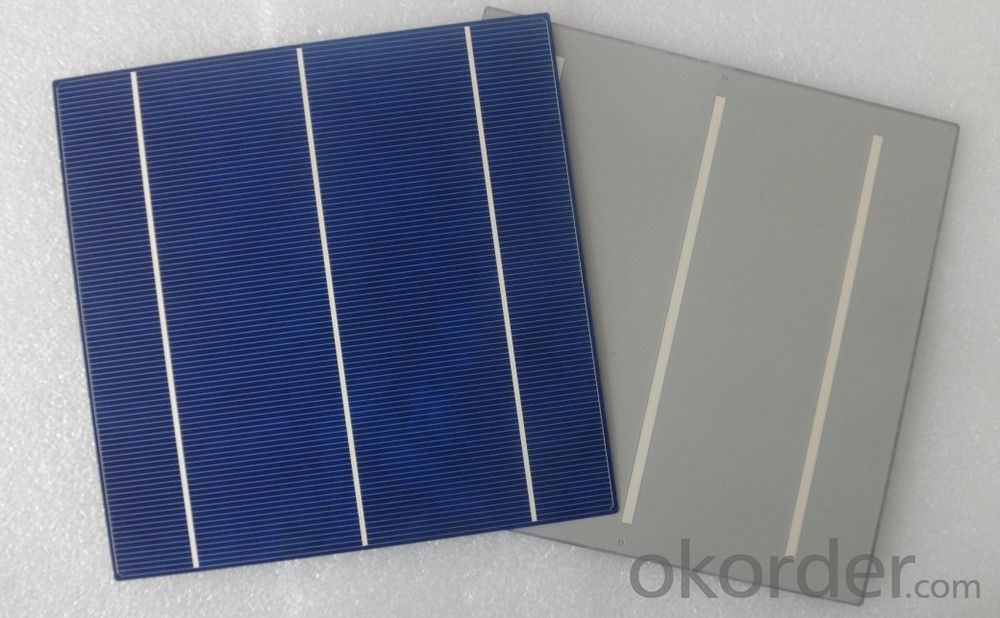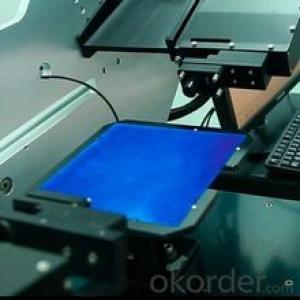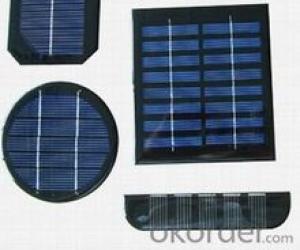156x156mm poly solar cell,pv solar cell supplier high efficiency cnbm
- Loading Port:
- Qingdao
- Payment Terms:
- TT OR LC
- Min Order Qty:
- 100 set
- Supply Capability:
- 300000 set/month
OKorder Service Pledge
OKorder Financial Service
You Might Also Like
Quick Details
| Place of Origin:china | Model Number: | TN-156P | Material: | Polycrystalline Silicon | |
| Size: | 156*156mm | Max. Power: | 4.53w | Efficiency: | 13.97~18.6 |
| Bus Bar: | 2/3 | Grade: | A/A-/B | Power Ppm(w): | 3.4w~4.53w |
Packaging & Delivery
| Packaging Detail: | Typical package for one carton contains 1,200 cells.The cells are sealed in cell box every 100pcs.Gross weight peri unit carton shall be around 17.1Kg. |
| Delivery Detail: | 1-3 days after payment |
6'' Low and High Efficiency Poly Solar Cell 156*156 mm



Our Advantage
Reason:
We enjoy exclusive channel to get solar cells at more competitive price from Sunpower,Neo solar,Motech,Gintechetc.
We signed long term purchase contract with our solar cell manufacturers,including but not limited to Neo solar,Motech,Gintech,AUO,then we can purchase unsorted solar cells in bulk from them and sort these unsorted solar cells into same efficiency,same pattern,same color by our own QA team. We call them Grade A-.
Quality :
These sorted solar cells have same electrical performance with Taiwan Grade A solar cells,only difference is the negligible superficial defect.
We can guarantee that they are better than grade A solar cells from tier 1 solar cell manufacturers in China mainland.
Price Comparison:
Efficiency 17.6, 2/3 Bus Bar Poly solar panel,
Taiwan Grade A price 0.31 USD/watt; Grade A- price 0.267~0.28 USD/watt
Product Description
1.Mechanical Properties :
Product Multi-crystalline silicon solar cell
Dimension 156 mm x 156 mm ± 0.5 mm
Thickness 200 μm ± 30 μm
Front 1.5 ± 0.1 mm busbar (silver)
Silicon nitride antireflection coating
Back 3.0 mm continuous soldering pads (silver)
Back surface field (aluminum)
2.Electrical Properties
Efficiency (%) Pmpp (W) Voc (V) Isc (A) Imin (A)
18.6 4.53 0.637 8.84 8.53
18.4 4.48 0.635 8.81 8.48
18.2 4.43 0.633 8.77 8.43
18.0 4.38 0.631 8.73 8.38
17.8 4.33 0.629 8.69 8.33
17.6 4.28 0.627 8.65 8.27
17.4 4.23 0.624 8.61 8.22
17.2 4.19 0.621 8.56 8.16
17.0 4.14 0.618 8.51 8.08
16.8 4.09 0.615 8.46 7.99
16.6 4.04 0.612 8.42 7.91
* Testing conditions: 1000 W/m2, AM 1.5, 25 °C, Tolerance: Efficiency ± 0.2% abs., Pmpp ±1.5% rel.
* Imin : at 0.5 V
3.Light Intensity Dependence
Intensity W/m2 Vmpp* Impp*
1000 1.00 1.00
800 0.99 0.80
600 0.99 0.60
400 0.97 0.40
200 0.94 0.20
4.Soldering Ability
Peel Strength: > 1.0 N/mm (Pull soldered ribbon from busbar in 5 mm/s of 180°)
Packaging & Shipping
1. Payment term: T/T in advance (W/U for sample order)
2. Lead time: It depends on your quantity. Usually we will send sample within 1-3 working days.
3. Shipping will be made via EMS, DHL, Fedex, UPS, Air, Sea etc. shipment

4. Others: If you have special specifications and requirements, we will do different offer as you required.
- Q:Can solar cells be used for desalination purposes?
- Yes, solar cells can be used for desalination purposes. Solar-powered desalination systems use solar energy to power the desalination process, typically through reverse osmosis or solar stills. This sustainable and renewable energy source can effectively convert seawater into freshwater, making it a viable solution for regions facing water scarcity.
- Q:Are solar cells weather-resistant?
- Yes, solar cells are weather-resistant. They are designed to withstand various weather conditions, including rain, snow, and extreme temperatures, without significant damage to their functionality.
- Q:What is the effect of shading on solar cell performance?
- The effect of shading on solar cell performance is significant as it can substantially reduce the overall power output of the solar panel. When even a small portion of the solar cell is shaded, it creates a bottleneck for the flow of current, which can lead to a decrease in the voltage and current output. Shading can cause hotspots to form on the shaded cells, resulting in potential damage or reduced efficiency. Therefore, it is crucial to minimize shading on solar panels to maximize their performance and overall energy generation.
- Q:What is the role of trackers in solar cell systems?
- The role of trackers in solar cell systems is to maximize the efficiency of solar panels by automatically adjusting their position to follow the sun's path throughout the day. This allows the panels to capture the maximum amount of sunlight and generate more electricity.
- Q:How do solar cells perform in different temperature ranges?
- Solar cells generally perform better in cooler temperatures. As the temperature increases, the efficiency of solar cells tends to decrease. However, the actual performance can vary depending on the specific type of solar cell and its design.
- Q:Can solar cells be used for powering concert venues?
- Yes, solar cells can be used for powering concert venues. Solar panels can be installed on the roof or surrounding areas of the venue to capture sunlight and convert it into electricity. This renewable energy source can help reduce the carbon footprint of the venue and provide a sustainable solution for powering concerts.
- Q:Can solar cells be used for powering amusement parks?
- Yes, solar cells can be used for powering amusement parks. Solar energy can be harnessed through solar panels, which can generate electricity to power various rides, lighting systems, and other infrastructure within the park. It is a sustainable and environmentally friendly alternative to traditional energy sources, reducing the carbon footprint and operating costs of the amusement park.
- Q:Are solar cells affected by temperature changes?
- Yes, solar cells are indeed affected by temperature changes. As the temperature increases, the efficiency of solar cells decreases. This is because higher temperatures can lead to an increase in resistance, which reduces the amount of current that can be generated. Additionally, excessive heat can cause thermal stress and damage to the materials of the solar cells, affecting their overall performance. Therefore, it is important to consider temperature variations when designing and operating solar energy systems.
- Q:How do solar cells contribute to reducing greenhouse gas emissions?
- Solar cells contribute to reducing greenhouse gas emissions by generating electricity from sunlight, a renewable and clean source of energy. By harnessing solar power, solar cells eliminate the need for conventional fossil fuel-based electricity generation methods, such as burning coal or natural gas, which release large amounts of greenhouse gases into the atmosphere. Therefore, the widespread adoption of solar cells helps decrease our dependence on fossil fuels, mitigates climate change, and contributes to a more sustainable future.
- Q:How do solar cells generate electricity?
- Solar cells generate electricity through the photovoltaic effect, where sunlight photons excite electrons in the cell's semiconductor material, creating a flow of electric current.
1. Manufacturer Overview |
|
|---|---|
| Location | |
| Year Established | |
| Annual Output Value | |
| Main Markets | |
| Company Certifications | |
2. Manufacturer Certificates |
|
|---|---|
| a) Certification Name | |
| Range | |
| Reference | |
| Validity Period | |
3. Manufacturer Capability |
|
|---|---|
| a)Trade Capacity | |
| Nearest Port | |
| Export Percentage | |
| No.of Employees in Trade Department | |
| Language Spoken: | |
| b)Factory Information | |
| Factory Size: | |
| No. of Production Lines | |
| Contract Manufacturing | |
| Product Price Range | |
Send your message to us
156x156mm poly solar cell,pv solar cell supplier high efficiency cnbm
- Loading Port:
- Qingdao
- Payment Terms:
- TT OR LC
- Min Order Qty:
- 100 set
- Supply Capability:
- 300000 set/month
OKorder Service Pledge
OKorder Financial Service
Similar products
New products
Hot products
Related keywords



























